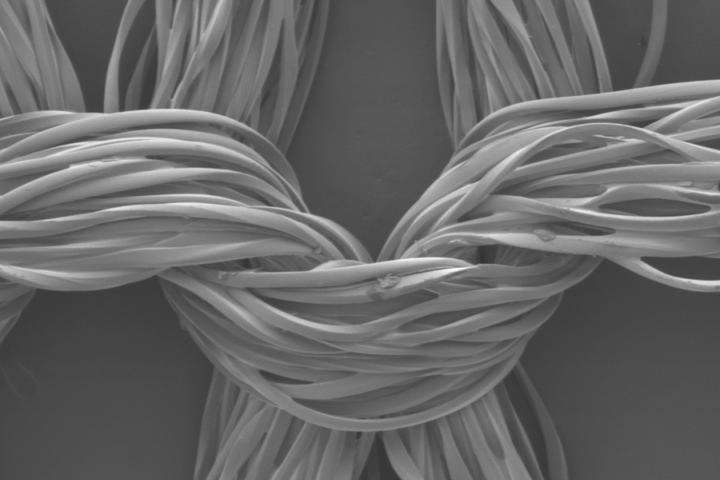Knitwear, knitted fabric
English
Knitwear, knitted fabric
Knitted fabric consists of a number of consecutive rows of interlocking loops. There are two major varieties of knitting: weft knitting and warp knitting. In the more common weft knitting, the wales are perpendicular to the course of the yarn. In warp knitting, the wales and courses run roughly parallel. In weft knitting, the entire fabric may be produced from a single yarn, by adding stitches to each wale in turn, moving across the fabric as in a raster scan. By contrast, in warp knitting, one yarn is required for every wale. Since a typical piece of knitted fabric may have hundreds of wales, warp knitting is typically done by machine, whereas weft knitting is done by both hand and machine.
Dutch
Breisel, breiwerk
Breisels bestaan uit draden die in een golfvorm gelegd zijn en dan door elkaar gehaald worden. In een inslagbreisel lopen de draden in de breedterichting en in een kettingbreisel in de lengterichting. Ook de breierij kent 3 grondbindingen, waarvan het effect het duidelijkst te zien is in inslagbreisels, in kettingbreisels is dit moeilijker te zien.
French
Tricot
Le tricot est une matière d'œuvre extensible à boucles entrelacées qui peut aussi se qualifier sous le terme maille. Le tricot est une étoffe fabriquée à partir d'un fil. Le tricot est constitué de boucles, appelées mailles, passées l'une dans l'autre. Il y a deux variétés majeures de tricot : le tricot en trame et le tricot en chaîne. Dans le tricot en trame, plus commun, le fil court perpendiculairement aux colonnes, et toute l'étoffe peut être tricotée avec un seul fil qui va et vient, en rangs dans le sens de la largeur ; tandis que dans le tricot en chaîne, le fil court en gros le long des colonnes, et il faut un fil par colonne.




